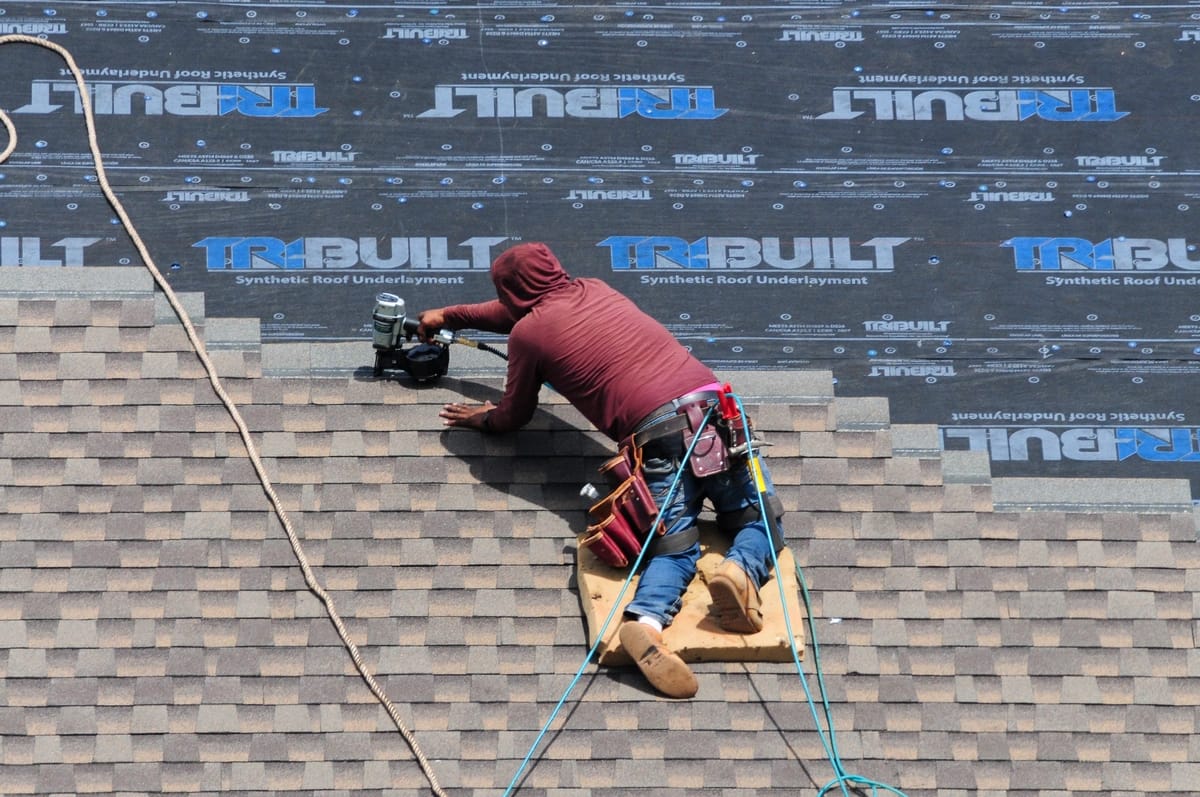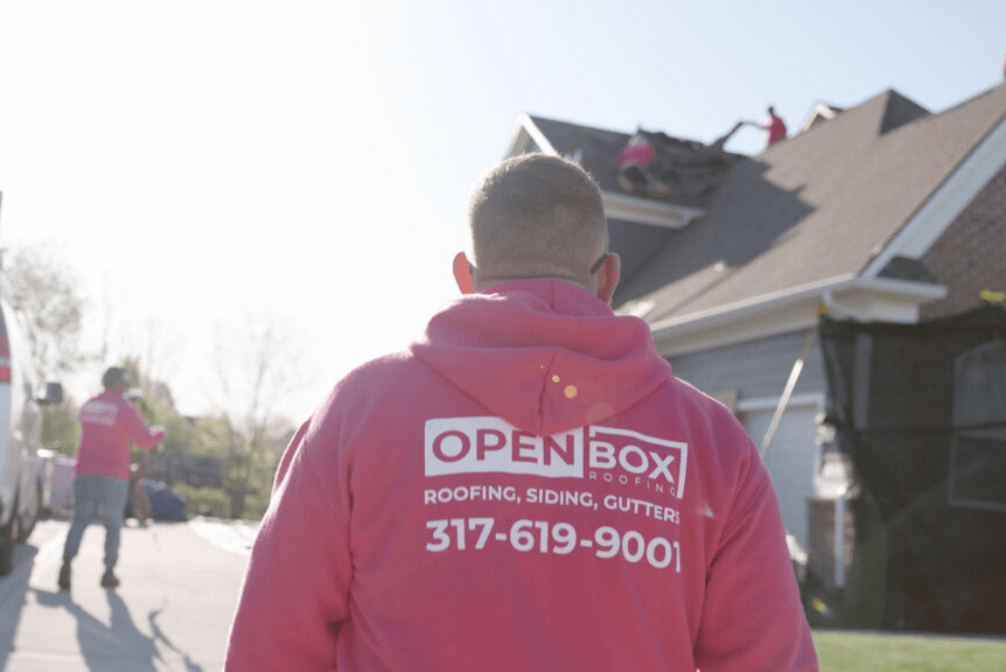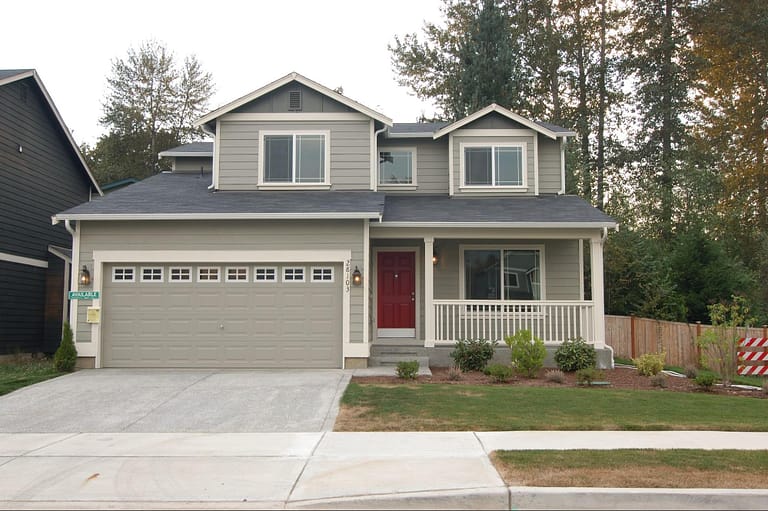Your roof is one of the most critical components of your home, protecting you and your belongings from the elements. Among the various roofing materials available, asphalt shingles stand out as a popular choice due to their affordability, durability, and ease of installation.
Ready to replace your shingle roof?
But not sure where to start?
In today’s blog post, we’ll walk you through everything you need to know about how to shingle a roof, including:
- Recognizing signs of roof deterioration
- Selecting the right type of shingles
- DIY installation tips
- Maintenance practices that can extend the lifespan of your roof
Ready for a roof replacement? Keep reading for all the details.
Signs That You Need to Replace Your Shingle Roof
Before diving into the process of shingling your roof, it’s essential to assess whether your current roof needs replacement. Here are some signs that indicate it might be time for a new shingle roof:
- Missing, cracked, or curled shingles: Inspect your roof for any shingles that are damaged, warped, or missing altogether. These issues can compromise the integrity of your roof and lead to leaks.
- Age of the roof: Asphalt shingle roofs typically last between 20 to 30 years. If your roof is approaching or has surpassed this lifespan, it’s prudent to consider replacement, even if it appears to be in good condition.
- Water leaks: Water stains on your ceiling or walls, as well as dampness in your attic, are clear indicators of roof leaks. Promptly address these issues to prevent further damage to your home’s interior and structure.
- Granule loss: Check your gutters and downspouts for an accumulation of granules from the shingles. Excessive granule loss can signify shingle deterioration and the need for replacement.
- Sagging roof deck: A sagging roof deck is a severe structural issue that requires immediate attention. It could indicate widespread roof damage and necessitate a complete roof replacement.
Different Types of Asphalt Shingles to Choose From

When it comes to asphalt shingles, homeowners have several options to choose from, each offering unique features and benefits. Here are the main types of asphalt shingles:
Three-Tab Shingles:
These are the most basic and economical option. Three-tab shingles consist of a single layer with cutouts that create three separate tabs. While they offer affordability, they typically have a shorter lifespan compared to other types.
Architectural Shingles:
Also known as dimensional or laminate shingles, architectural shingles are thicker and more durable than three-tab shingles. They have a multi-dimensional appearance that adds depth and texture to the roof, resembling wood or slate.
Luxury Shingles:
Luxury shingles are premium asphalt shingles designed to mimic the appearance of high-end roofing materials such as cedar shakes or natural slate. They offer superior durability, aesthetic appeal, and often come with extended warranties.
Impact-Resistant Shingles:
These shingles are specially engineered to withstand hail, wind, and other forms of impact. They are an excellent choice for homeowners in regions prone to severe weather conditions.
Cool Roof Shingles:
Cool roof shingles are designed to reflect more sunlight and absorb less heat, helping to reduce energy consumption and lower cooling costs during hot weather.
How to Shingle a Roof in 7 Steps
Shingling a roof is a labor-intensive process that requires careful planning, attention to detail, and the right tools and materials. Here’s a step-by-step guide to shingling your roof:
1) Prepare the Roof
Start by removing the old shingles, flashing, and any damaged or rotted decking. Inspect the roof deck for any structural issues and make necessary repairs.
2) Install Underlayment
Lay down a layer of roofing felt or synthetic underlayment to provide an additional barrier against moisture and improve the roof’s durability.
3) Start at the Bottom:
Begin installing the shingles at the eaves, working your way up the roof in horizontal rows. Overlap each row of shingles according to the manufacturer’s instructions, typically by 4 to 6 inches.
4) Nail the Shingles:
Use roofing nails to secure the shingles to the roof deck, ensuring they are properly aligned and spaced according to the manufacturer’s guidelines.
5) Cut and Trim:
Use a utility knife or roofing scissors to trim shingles as needed to fit around vents, chimneys, and other protrusions on the roof.
6) Install Flashing:
Install metal flashing around roof penetrations and along valleys to direct water away from vulnerable areas and prevent leaks.
7) Finish the Ridge:
Install ridge caps or shingle tabs along the ridge of the roof to provide a finished appearance and further protect against water infiltration.
When You Should Leave It to Professional Roofers

While shingling a roof is a feasible DIY project for experienced homeowners, there are instances where it’s best to leave the job to a professional roofing contractor. Consider hiring a professional if:
- The roof is steep or has a complex design: Working on steeply pitched roofs or roofs with multiple angles and features can be dangerous and challenging for inexperienced individuals.
- You lack the necessary skills and equipment: Properly installing shingles requires specific techniques, tools, and safety gear that may not be readily available to DIYers.
- Time constraints: Shingling a roof is a time-consuming task that can take several days to complete, depending on the size and complexity of the roof. If you’re short on time or facing inclement weather, hiring a professional can expedite the process and ensure quality results.
- Warranty considerations: Many roofing manufacturers require professional installation to maintain the warranty coverage on their products. Hiring a certified contractor can help protect your investment and ensure compliance with warranty requirements.
The Cost of Installing a New Shingle Roof
The cost of installing a new shingle roof can vary significantly depending on factors such as the size and pitch of the roof, the type of shingles selected, the complexity of the installation, and the geographic location. On average, homeowners can expect to pay between $5,000 to $10,000 for a standard asphalt shingle roof replacement. However, luxury shingles or specialty installations can drive the cost higher, while factors like roof accessibility and local labor rates can also influence pricing.
It’s essential to obtain multiple quotes from reputable roofing contractors and carefully review the scope of work and materials included in each estimate. While cost is a significant consideration, prioritize quality and reliability when selecting a roofing contractor to ensure the longevity and performance of your new roof.
How to Maintain Your Shingle Roof
Proper maintenance is key to prolonging the lifespan of your shingle roof and preventing costly repairs. Here are some essential maintenance tips to keep your roof in top condition:
- Regular inspections: Conduct visual inspections of your roof at least twice a year, preferably in the spring and fall, to check for signs of damage, wear, or debris buildup.
- Clean gutters and downspouts: Clear debris, leaves, and other obstructions from your gutters and downspouts to ensure proper drainage and prevent water from backing up onto the roof.
- Trim overhanging branches: Trim trees and branches that overhang your roof to prevent them from rubbing against the shingles or causing damage during high winds or storms.
- Repair leaks promptly: If you notice signs of a roof leak, such as water stains or dampness indoors, address the issue promptly to prevent further damage to your home’s interior and structure.
- Remove moss and algae: Use a mixture of water and bleach or a commercial roof cleaner to remove moss, algae, and mildew growth from your shingles. Avoid pressure washing, as it can damage the shingles and void the warranty.
Professional Roof Replacement for Your Roof
Shingling a roof is a significant investment that can enhance the curb appeal, durability, and value of your home. By understanding the signs that indicate the need for roof replacement, selecting the right type of shingles, following proper installation techniques, and implementing routine maintenance practices, you can ensure the longevity and performance of your shingle roof for years to come.
Whether you choose to tackle the project yourself or enlist the help of a professional roofing contractor, prioritize quality, safety, and adherence to manufacturer guidelines to achieve optimal results. Contact Open Box Roofing for help installing asphalt shingles for your roof.






